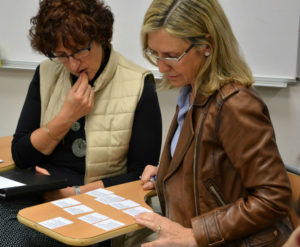1 week
Course Length
Flexible
Lesson Days
15
Lessons
English
Language
B1
Minimum Level
Overview
Living in a world which embraces diversity, Global learning explores the similarities and differences between people and places around the world as well as their interconnections. After being introduced to the main concepts of Global learning, the participants of this course will be shown how to design a global curriculum.
The course asks how existing tasks and activities can be redesigned to include the global perspective as well as on how a Global Learning approach can expand learners’ thinking and horizons in such a way that cultivates and develops critical literacy with the aim of improving, learners’ empathy, respect for diversity and understanding of local, national and global communities.
Completing this course will help you:
- To understand the main concepts of Global learning by critically examining their own values and attitudes as teachers
- To understand the Global learning context that emphasises self-expression and communication skills with others and between communities
- To increase teachers’ confidence in relation to developing Global learning approach awareness by designing tasks and materials that combat injustice, prejudice and discrimination
- To be aware of the resources, materials and people available to support global teaching.
Who is the course for?
For teachers who want to acquire knowledge of global learning context that highlights self-expression and interaction skills with others and between communities.
Course Sample programme
| Week 1 | Course Content |
| Day One | Concepts of Global learning “Values and Attitudes” |
| Day Two | Global learning framework “Emphasis on self-expression and communication skills with others and between communities” |
| Day Three | Global learning approach awareness by designing tasks and materials that combat injustice, prejudice and discrimination. |
| Day Four | Classroom practice |
| Day Five | Review and Feedback |
*Please note that the course content may be subject to change due to latest methodology trends updates. 1 lesson=45mins
Share This Class:
What people are saying



In-House Training
You might also be interested in these courses

Supporting pupils with Special Educational Needs and Disabilities
This course develops the skills of those involved in the education of pupils with Special Educational Needs and/or Disabilities (SEND) so that these children…

Higher Order Thinking
Developing Higher Order Thinking requires teachers to establish with their student a knowledge base of thinking skills, reasoning, critical thought, and problem-solving…

Scaffolding
With our workshop “Scaffolding” you will understand in more details on how to support second language learners by providing helpful hints to help students…
More Courses in the UK, Ireland and Malta
You might also be interested in these courses

Technology for Language Teachers
Technology for Language teachers is aimed at teachers who want to use more technology in the classroom to enhance the learning experience of their students…

Teaching for Exam Classes
Teaching for Exam Classes is for English teachers who are preparing teenage or adult students for exams. Preparing to teach Cambridge or IELTS exam class. London…

Pronunciation and Performance with an expert “Adrian Underhill”
Pronunciation and Performance with an expert is a course led by a world-renowned ELT Consultant and Trainer. Adrian Underhill is an author and the series…
Methodologies

Total Physical Response
Total Physical Response is considered to be an excellent way of learning vocabulary. Moreover, since it is based on commands, the students can easily learn the meaning of the words in the target language.

The Structural Approach
This method is based on the opinion that it is imperative to understand the structures of the language. Understanding the complexities of the structures of the sentences in a language is more important than learning the vocabulary of the language.

The Direct Method
This method primarily focuses on the development of oral skills. One of the most important characteristic feature of this method is that visual materials and real-life objects are used. Moreover, such an oral training helps in reading and writing. There is no translation involved in this method.
